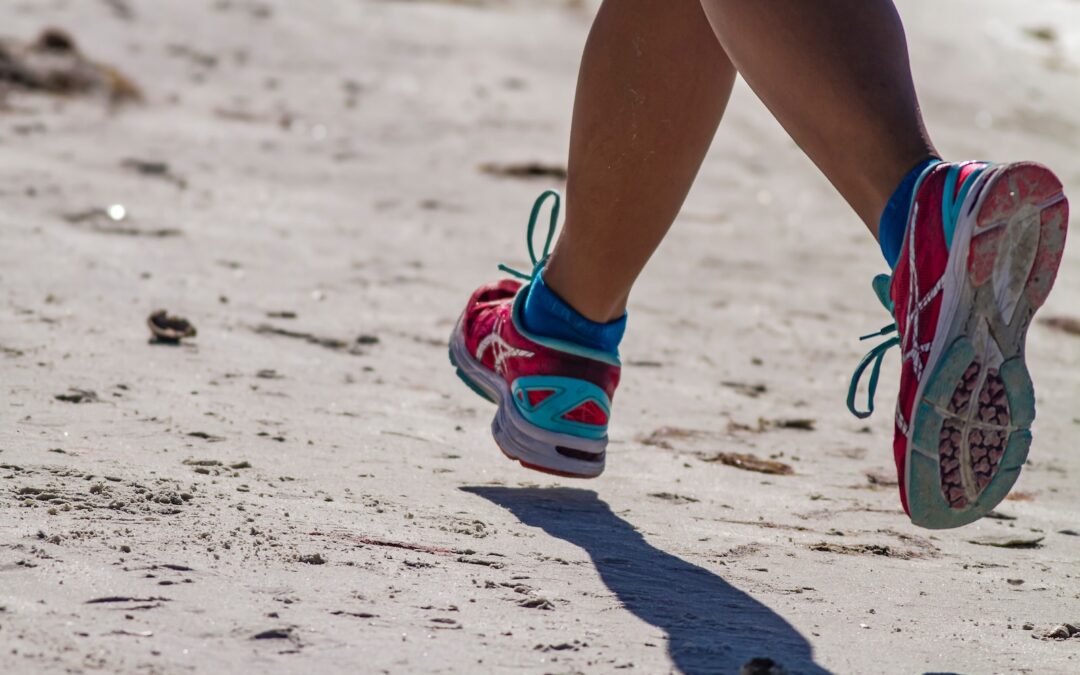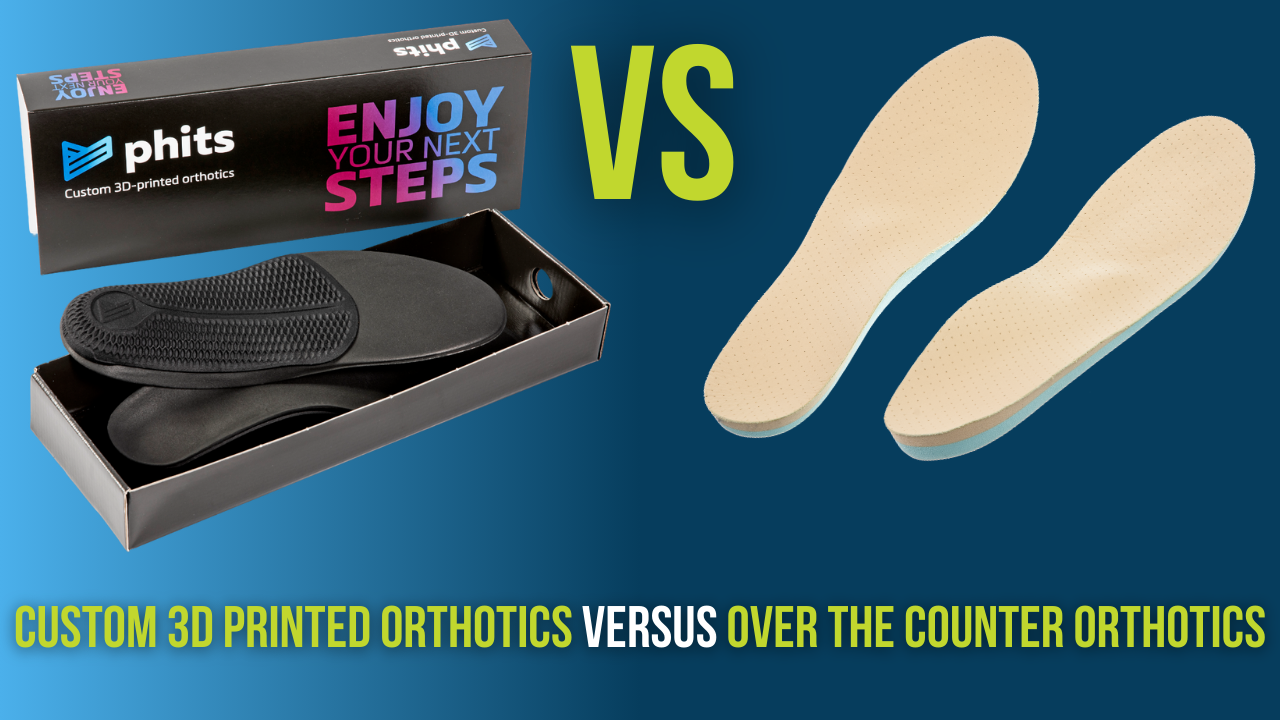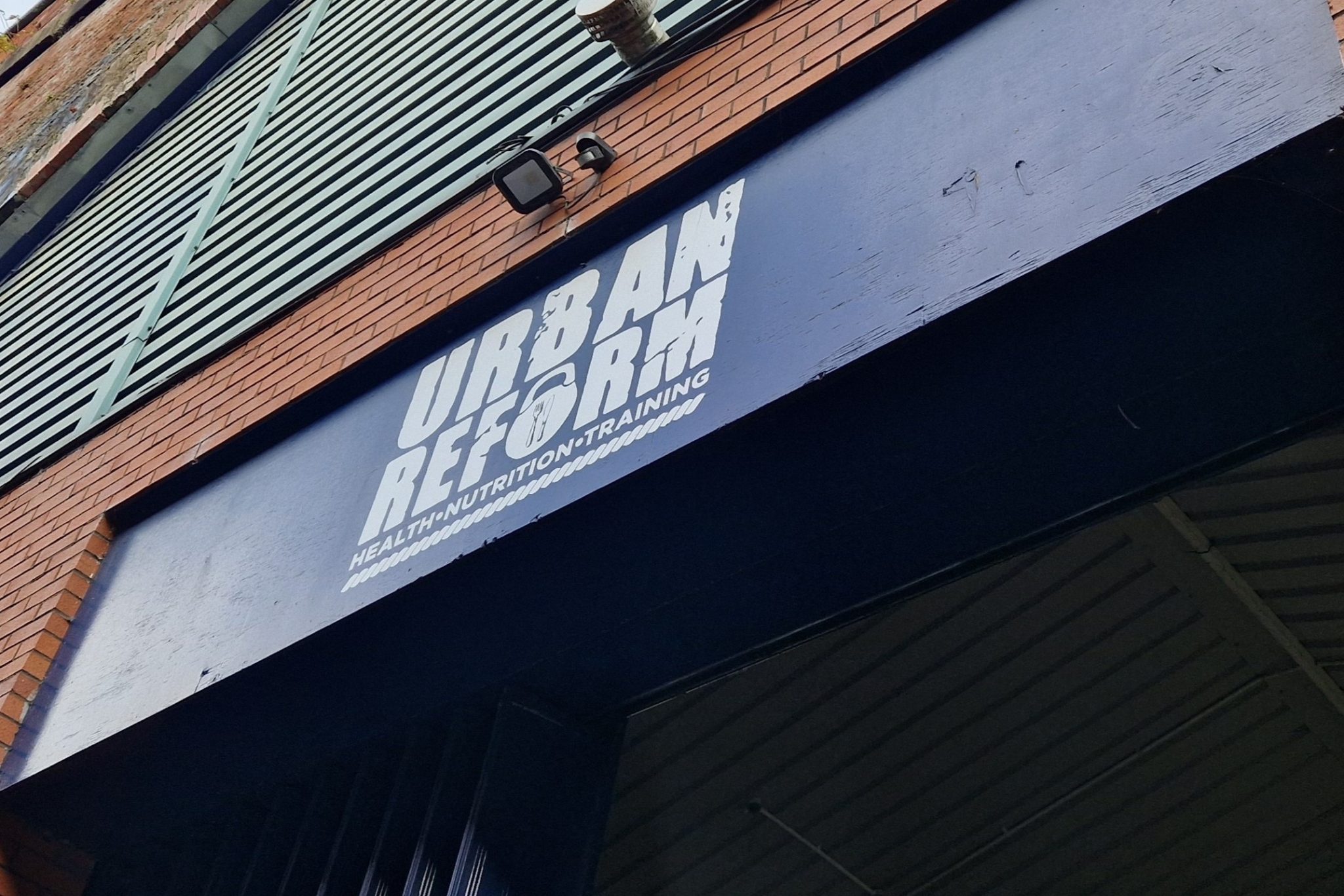HOW IMPORTANT ARE PRE AND POST RUNNING EXERCISES?
We can all be guilty of putting on our running shoes and heading straight out of the door to get our run done and dusted. but it's very important to do the correct exercises to look after our bodies pre and post running. A light jog or starting off slowly at the start of a run doesn’t offer the same stretch and response movement to that of a set of dynamic stretches.
There is a huge importance of doing exercises pre and post running, and adding this to your routine can be a great benefit to your training plan; potentially preventing injuries from arising.
The benefits of pre and post exercises are vast and include; increasing heart rate and therefore blood flow to the muscles that are going to be used, improving range of motion around the joints that are going to be used, reducing the potential onset of muscle soreness in days to come (therefore promoting more efficient recovery) and activating specific muscle groups that will improve stability during performance.
When looking into pre running exercises, dynamic stretching is recommended, as this will significantly improve muscle elasticity and help to counteract any deficits in muscle elasticity (as that can decrease with age). They can also maximise strength and power and flexibility during the actual run itself. Dynamic stretches should be done for around 1 minute per leg, so should take around 10 minutes to do, and should make you feel a little out of breath (but you should not be gasping for air).
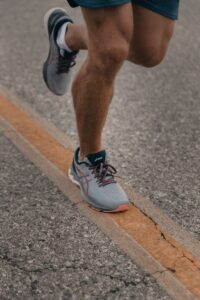
PRE RUN STRETCHES
DYNAMIC STRETCH #1: RUNNING MAN
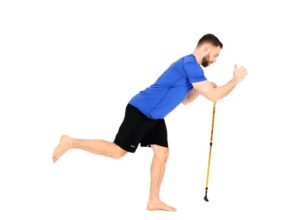 The first exercise is what we call “Running Man”. This is particularly effective as it is so specific and functional to any kind of running training and marathon training. This exercise is very effective as it is a fairly low-level exercise but involves the use of lots of important muscles in the lower back and core and includes some single leg stability and proprioception use as well.
The first exercise is what we call “Running Man”. This is particularly effective as it is so specific and functional to any kind of running training and marathon training. This exercise is very effective as it is a fairly low-level exercise but involves the use of lots of important muscles in the lower back and core and includes some single leg stability and proprioception use as well.
This exercise can be made easier by adding support or assistance with a golf club/broom/stick, and it can be progressed accordingly with the use of a theraband or handheld dumb bells. This exercise also involves a hip hinge movement which is very beneficial for improving the strength of the lower back. To do this exercise the starting position is standing on one leg with a dowel/stick/cane used for support on the same side. You then lift the other knee towards your chest and make sure your arms are in the corresponding runner’s position. In a slow motion, bring the raised leg back and down towards the ground without touching the ground with the toes. Be sure to bend your hips, not your back, as you reach backward with the moving leg. Continue to swing your arms in a running motion as you move your leg back and forth.
DYNAMIC STRETCH #2: GLUTE BRIDGE
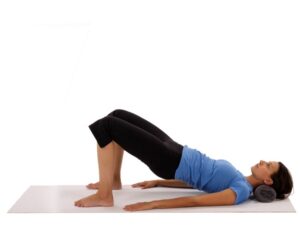
Secondly, a glute bridge variation with the added use of a resistance band, which can increase the activation of the gluteals compared to performing the exercise without a band. This exercise is an easy way to get the gluteals to start recruiting, and engaging. Keeping the glutes strong is important for general running performance and lower limb strength.
To start this exercises lie down on your back with knees bent and feet flat on the floor at hip-width. Put a towel or pillow under the neck. Your arms should be straight and next to your body. Push your feet in the ground and lift your hips toward the sky. You can maintain the position or repeat the movement while inhaling/exhaling. This can be done either for repetitions or for a certain amount of time, whatever is preferred.
DYNAMIC STRETCH #3: STANDING LEG SWING
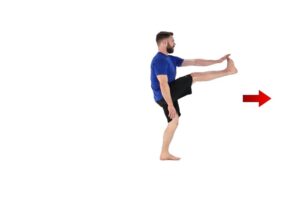
It is important to effectively stretch the hamstring muscles as they play a big role in running, especially if you are to pick up speed, so a great way to dynamically stretch the hamstring is by doing a stand leg swing.
To do this in standing, lift one leg to the outstretched opposite hand while maintaining an upright posture. As you warm up, increase the speed and height of the kick, and you can also progress up onto the toes of your standing leg.
DYNAMIC STRETCH #4: HEEL PUMP
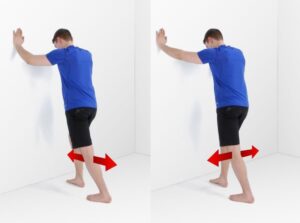 We often hear about people “pulling their calfs” all too easily when running, so as well as appropriate loading exercises to strengthen them effectively, a quick heel pump type movement can be a great way to dynamically stretch the gastrocnemius.
We often hear about people “pulling their calfs” all too easily when running, so as well as appropriate loading exercises to strengthen them effectively, a quick heel pump type movement can be a great way to dynamically stretch the gastrocnemius.
To do this, stand facing a wall with one leg behind you, the back heel on the ground and the back knee straight—you should feel a stretch behind the lower leg. Keeping the stretched position, perform back-and-forth movements with your back knee. This should be done for around 1 minute on each leg.
DYNAMIC STRETCH #5: STANDING HIP OPENER
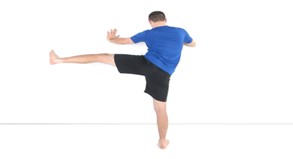
Finally, a standing hip opener is a great dynamic stretch which targets the hip external rotators.
This can be done standing near a wall for balance and swinging your leg laterally, keeping your lower back stable and facing forward. This is great to do for 1 minute each leg.
POST RUN STRETCHES
Now we have discussed dynamic pre running exercises, and the importance of these, it is important to emphasis the importance of post running stretches too or doing a form of “cool down”. Doing an appropriate amount of stretching after a run is important for reducing muscle soreness, muscles, and joint stiffness, and can be helpful for removing lactic acid. The good news it shouldn’t take too long to stretch the main muscles that you have used during your run, and each stretch should be held between 30-60seconds on each side. Typically, post running stretches are static in nature, and don’t have the amount of quick dynamic movement as your pre running stretches.
DYNAMIC STRETCH #1: ASSISTED HAMSTRING STRETCH
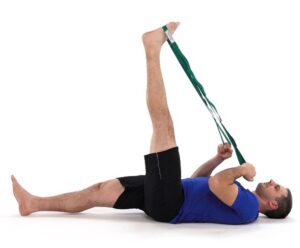
A great hamstring exercise is an assisted stretch whilst lying down on your back. This decreases the amount of lower back involvement and specifically targets the hamstrings very well.
To do this, lie on your back and place a long strap around your forefoot, holding the ends with your hands. Lift your leg straight up, keeping your knee straight, and pulling gently on the strap with your hands until you feel a gentle stretch behind the hamstring and calf.
DYNAMIC STRETCH #2: QUADRICEP STRETCH
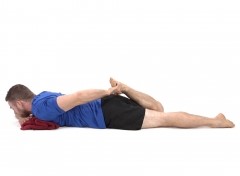
It is equally important to stretch the quadriceps, the muscles at the front of the leg.
A simple way to do this is to lie on your front and pull the heel toward the buttocks with the opposite hand until a stretch is felt in front of your leg. If you find it hard to reach your ankle, you can use a towel or resistant band to assist you.
DYNAMIC STRETCH #3: GLUTE STRETCH
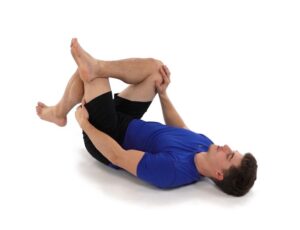
Finally, a glute stretch is a great post running stretch, as the hip/glute area can easily become overloaded during running and can cause separate issues further up/down the kinetic chain.
To effectively do this, you can lie on your back with your knees bent, place one foot (affected side) over the opposite knee. Grab behind the leg that is on the ground with your hands and pull it toward you until you feel a gentle stretch. To increase the stretch, you can push and add pressure to the knee.
Adding these simple exercises pre and post running may help with not only your running efficiency but also your recovery and injury rate, so although it might add time to what can be an already busy lifestyle, they can be very important and worth the time!
If you’re really seeking to improve your running technique/ability and implement exercises bespoke to you. Why not book a running analysis with one of our team?
If you’re struggling with an injury that’s stopping you getting back into exercise, call us on 0800 731 2738 or book online here.
If you need some help designing a program that will keep you exercising, get in touch at https://www.summitphysio.co.uk.
For more free tips and information, make sure to follow our Facebook and Instagram pages. We also post client stories, so you can see how we’ve helped people get back to doing the things they enjoy!
